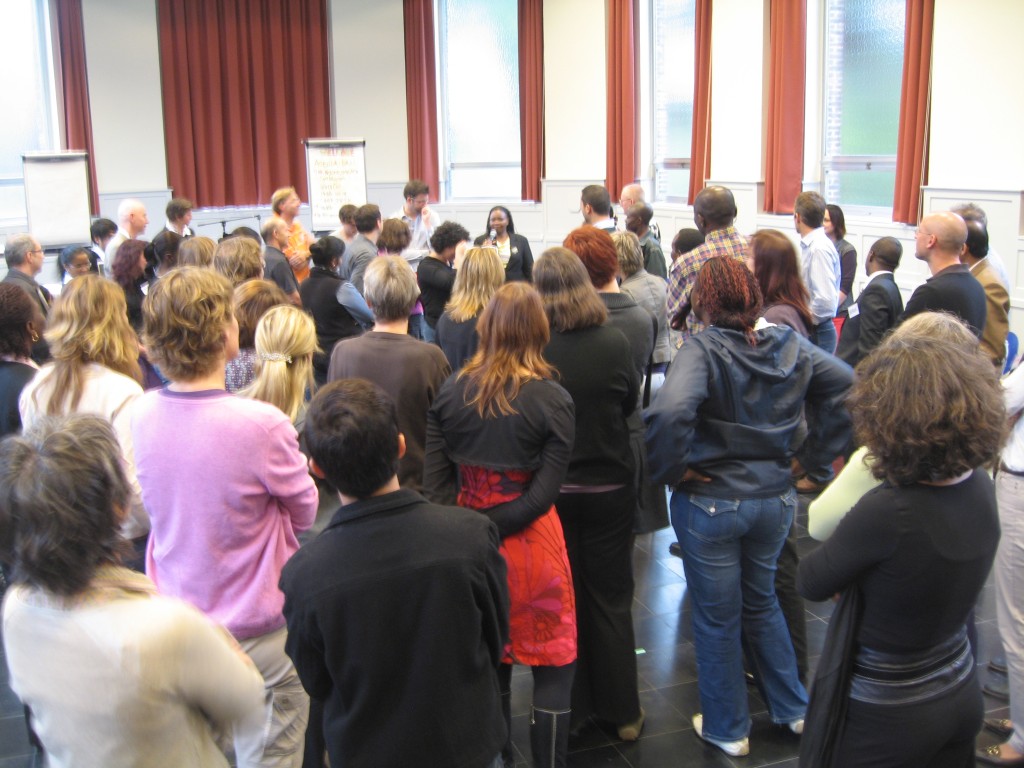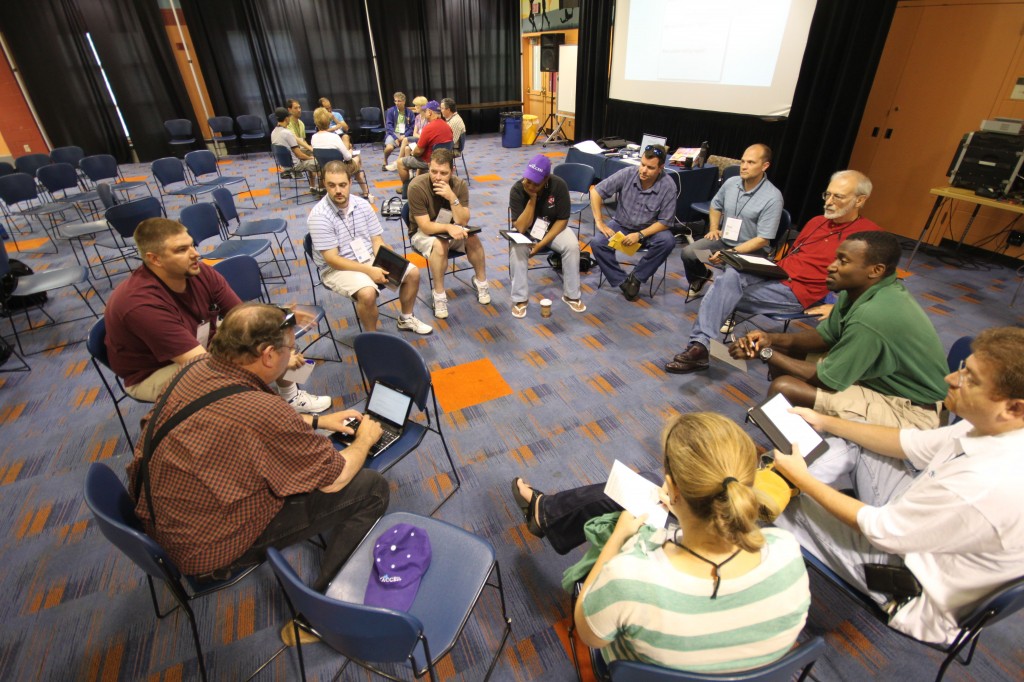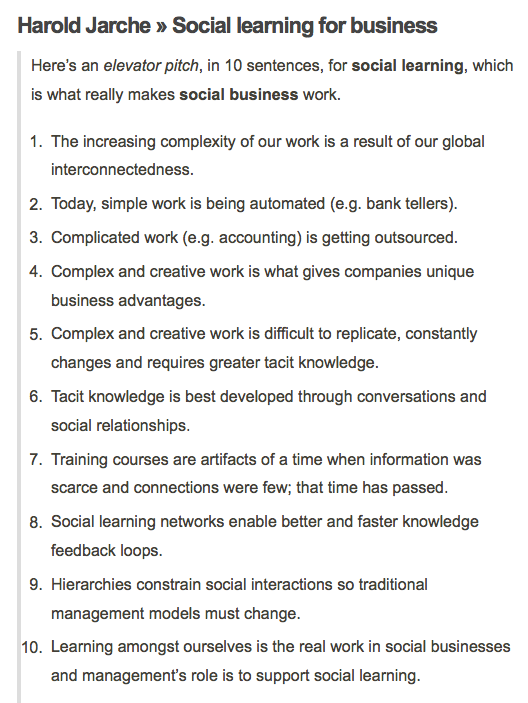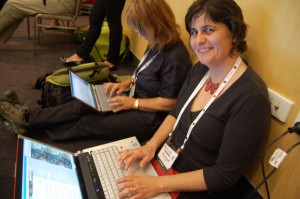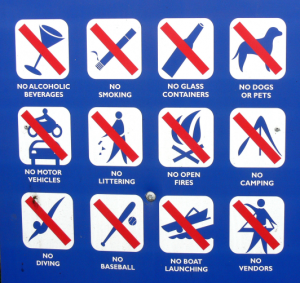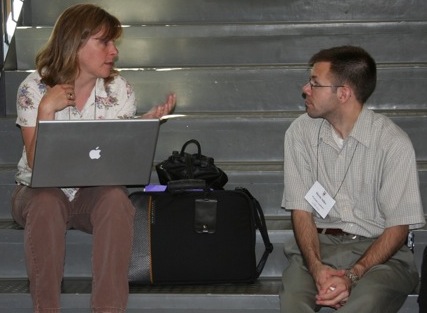A post about posting (on walls) at events – part 1
Recently I’ve felt frustrated and baffled. No less than three venues (two hotels and a conference center) in the last month told me that I couldn’t post anything on the walls of the room I was meeting in.
I couldn’t post anything. No flip chart paper, masking tape, stick pins, thumbtacks, sticky notes, or wall clips.
That’s a blanket “no”
To add insult to injury, none of the venues apologized or offered any suggestions on alternative ways I could display materials on a vertical surface. None of them had any substitute surfaces, like large portable notice boards or whiteboards available.
One conference organizer wondered if I could use tables instead. Unfortunately, tables are not a comparable substitute for walls for two reasons:
- On walls, notes or cards can be placed anywhere in a seven-foot band between the floor and where people can reach. On tables, human reach limits us to a three-foot band.
- Many more people can easily see information placed on a wall compared to a table.
Why we need to be able to post on walls at meetings
Some of the most powerful techniques available for group problem-solving require ways to display multiple pieces of information to an entire group. Members can easily and publicly move items around to cluster, list, sort, and map relationships. Schools have used blackboards (chalkboards) for two hundred years to display information to students. Thumbtacks (aka drawing pins) have existed for over one hundred years. Masking tape was invented in 1925. We’ve been using Post-it Notes for over thirty years. These are not new technologies, folks, why are venues banning them from their walls where we meet?
I understand that people use venues for many different purposes. Wall damage, through incorrect use of attachment technology or marker bleed-through, costs money to repair. But “wall work” is an essential component of group problem solving, and for a venue to prohibit its use while offering no alternatives makes it hard to hold many kinds of useful meetings.
In the second part of this post, I’ll cover some of the technologies now available for posting information on walls, including some that you may not know about. Stay tuned!
Have you had venues not allow you to post materials on their walls? What did you do?
Photo attribution: Flickr user pierrelaphoto





